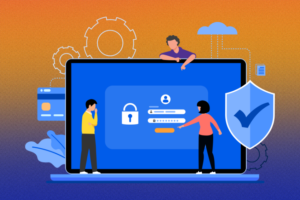If you don’t have EDR, you’re not prepared… Read below to find out how you can get EDR for your business and prevent cyberattacks that can cost you lost time and money.
Most of us are familiar with antivirus software and think we are protected against any virus or cyber attacks because we have it installed and running on our computers. But why do we still come across different stories of businesses still falling victim to ransomware and having to pay a hefty fine as well as deal with many hours of downtime? According to PURPLE SEC’s research, ransomware attacks increased 41% in 2019 with over 205,000 businesses lost access to their files. And the FBI reported in 2019 they received 2,047 complaints regarding ransomware with losses estimating over $8.9 million.
One solution many small businesses and corporations are starting to incorporate in the recent years into their security defense is Endpoint Detection and Response (EDR) service. This is a key software component that can capture deep system level activities with AI driven analysis to enhance detection of new and unknown threats. That way, not only is it just remediating the threat, but it provides insight into how to patch up vulnerabilities and strengthen cybersecurity for the organization against any other future attacks. EDR software is extremely crucial during those moments as it gives visibility to any abnormal activity on all devices (endpoints) and alerts IT professionals to quickly analyze and take action before it is too late.
To clarify, traditional antivirus software is an off the shelf product designed to protect and remove malware from computers that security researchers have already programmed to recognize based on past malicious signatures. It does a great job in detecting viruses and malware that have basically been discovered and researched but not so much on 0-day viruses that were just released or active attacks on any system vulnerabilities hackers discover. Traditional antivirus software is a great security defense for home networks but is not the best protection for businesses as any hacker’s goal in infiltrating networks is for their greatest monetary gain and benefit.
How does Endpoint Detection and Response (EDR) work?
- Software agents run on all devices (endpoints) such as computers that are connected to the company network to monitor and collect data into one central data center for analysis by AI.
- All incoming data and any abnormal activity recognized as a possible security breach/threat, triggers automated actions to alert IT Support for immediate investigation. This can prevent hackers or other attackers from getting deeper access into systems and networks.
- Real-time data is provided to IT Support at all times to monitor and track the progress of any suspected threats especially “0day exploits” which are vulnerabilities in systems that have not been studied or patched up yet.
- Upon discovering abnormal activity, EDR can isolate endpoints (devices) from continued access to the network, quarantine any threats and remediate any affected systems.
As many attackers with malicious intent are focusing more on attacking businesses for monetary gain, it is highly recommended to invest in EDR as the next level of security defense for your business to prevent any downtime, lost data or ransom. EDR software such as ActiveEDR by SentinelOne can provide visibility into what is occurring on the network and allows IT security to discover the root of the threat. If you would like to find out more about EDR or incorporate it into your business for better security, reach out to us at TechOnSite and we can see if this is a good fit for your organization.






